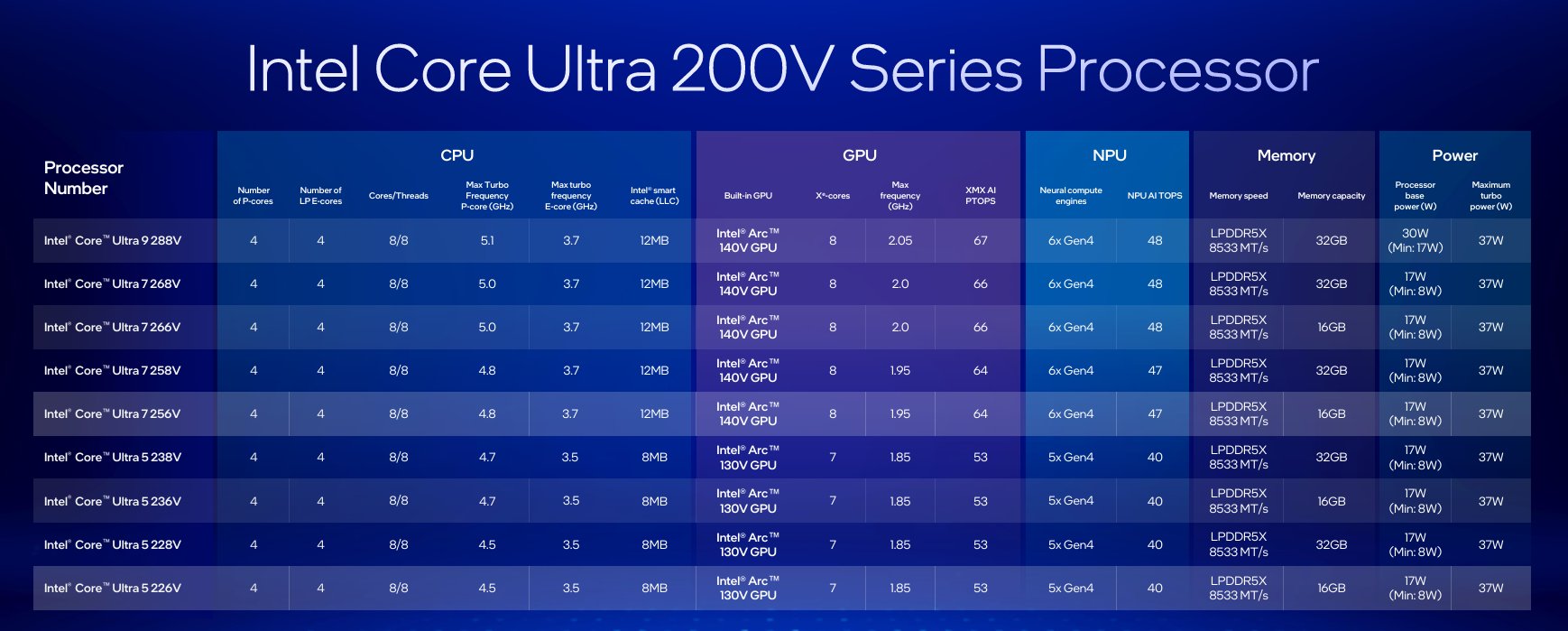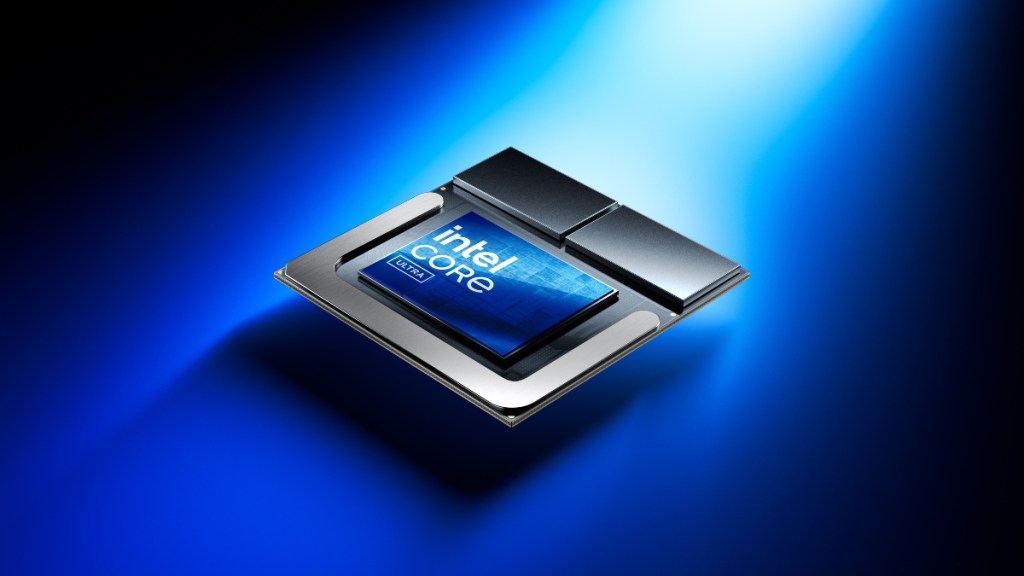Intel is taking the fight to Apple and Qualcomm with its latest x86 Lunar Lake AI processors. At IFA 2024, the tech giant unveiled the Core Ultra 200V lineup, previously codenamed Lunar Lake, and it’s making some bold claims. According to Intel, these chips not only match but surpass the competition in nearly every aspect.
Set to debut in laptops starting September 24th, Intel promises “the fastest CPU core,” “the world’s best built-in GPU,” and “the best AI performance” with the new Core Ultra 200V series. These claims set the stage for a heated battle in the laptop market, especially against Qualcomm’s Snapdragon X Elite and AMD’s Ryzen AI 300.
Gaming powerhouse
When it comes to gaming, Intel is flexing its muscles. Lunar Lake features an Xe2 GPU, capable of delivering 80 percent faster gaming performance compared to the previous generation, Intel says.
The flagship Core Ultra 9 288V chip boasts a 68 percent better frame rate on average than Qualcomm’s top-tier X1E-84-100. It also outperforms AMD’s HX 370 chip in the Asus Zenbook S16 by 16 percent.
Intel isn’t stopping there—its XeSS upscaling technology promises to make ray-traced games playable on its integrated GPU, delivering impressive frame rates without additional hardware.
AI and connectivity
AI performance is another area where Intel’s Lunar Lake shines, at least on paper. The company claims its new chips deliver far faster performance in AI-heavy tasks, such as Adobe Premiere and Lightroom, compared to Qualcomm. Intel’s Lunar Lake processors promise up to 48 TOPS (tera operations per second) of AI performance, a significant leap from the 10 TOPS NPU (neural processing unit) in previous Meteor Lake chips. With 50 TOPS, AMD’s Ryzen AI 300-series stands out in the market with the highest TOPS among NPU-configured chips at the time of writing. Qualcomm’s Snapdragon X series NPU can pull 45 TOPS while Apple’s M4 boasts 38 TOPS.

The chip also includes an AI accelerator boasting an additional 67 TOPS of performance, further enhancing its AI capabilities.
Additionally, Lunar Lake-powered laptops will feature top-tier connectivity options, including Wi-Fi 7, Bluetooth 5.4, and at least two Thunderbolt 4 ports, ensuring fast USB-C connections and support for up to three 4K monitors.
The Lunar Lake trade-offs
However, Lunar Lake isn’t without its trade-offs. Each of Intel’s nine Core Ultra 200V chips comes with just eight CPU cores and eight GPU cores, maxing out at 32GB of RAM. Intel has opted for a more efficient design by integrating memory into the CPU package, eliminating separate memory sticks or chips. While this boosts efficiency (by integrating memory closer to the processor cores, Intel has managed to reduce latency and system power usage by 40 percent), it limits expandability. Plus, Intel has ditched hyperthreading, which might make power users pause.
Lunar Lake chips will include eight cores with improved performance and efficient cores (P-cores and E-cores). Intel claims they can deliver 1.4 times faster performance in Stable Diffusion 1.5 compared to the Snapdragon X Elite. Additionally, an “advanced low-power island” within the chip is designed to handle background tasks efficiently, contributing to a 60 percent improvement in battery life over Meteor Lake.
Looking ahead
For those craving even more power, Intel hints that its upcoming Arrow Lake chips, potentially arriving as soon as October 10th, will offer more cores, threads, and RAM.
With major manufacturers like Acer, Asus, Dell, HP, Lenovo, LG, MSI, and Samsung already lined up to launch 80 different laptops featuring these chips, Intel’s Lunar Lake is set to make waves in the market. But only time will tell if it would be enough to bring Intel out of the major sales slump as well as the negative press from all the performance-related controversy around its 13th- and 14th-generation Core desktop CPUs.








